Your Planets
Portraits of the Planets
Aspects between Planets
The planetary ages
The planetary families
Planets in Signs
The Planets in comics


The nature of astrological effects is primarily conjectural, stochastic and chaotic. There is therefore no mechanical astrological determinism of which a statistical study could show, and not demonstrate, the probability or the improbability. This fact has not stopped supporters and opponents of astrology from indulging in it for better (rarely) and worse (almost always). However, serious statistical studies could highlight and detect some of the most salient and therefore most visible astrological effects. But these have never been made, although all the elements are in place for them to be made. For daring researchers, a vast unknown territory therefore remains to be explored, knowing that it would be limited to the tip of the astrological iceberg, of which around 90%, by spinning this icy metaphor, would therefore remain beyond the reach of any statistics…
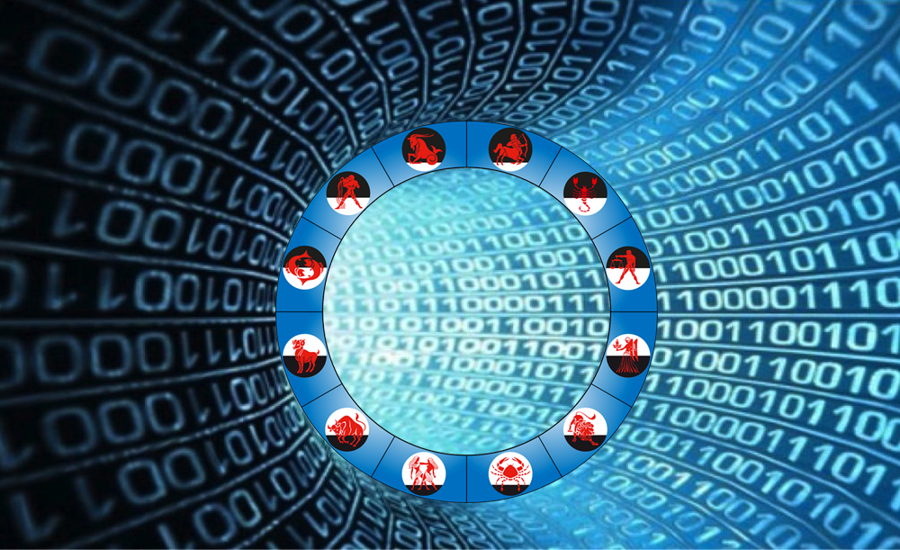
The most numerous statistics are those relating exclusively to the Sun Signs and most have been driven by anti-astrology illusionists Barnum effect enthusiasts or of Carlson’s pseudo-experiment. These have almost all produced results invalidating any probability of a correlation between the Sun sign and the character of an individual or his profession. Their negative results were predictable for any serious astrologer, who knows from experience that it is absolutely futile and wrong to try to reduce the personality of an individual to the only characteristics of his or her Sun sign, which is only one element among others of his natal horoscope. And if there was the slightest possibility that humanity could be divided into 12 different types whose psychological and functional characteristics would be obvious, it would be known and it would have been observed for a very long time by everyone. You really have to be the most remained of anti-astrologers or astrologers to imagine, think or believe the opposite. But you should know that the overwhelming majority of anti-astrologers are as ignorant of zodiac-planetary influences as most astrologers themselves. The first are only the absurd, vain and derisory symmetry of the second.
Note in passing that reducing humanity to 12 different zodiacal types is neither more nor less absurd than reducing it to 6 types with the AFC Holland psychometric test based on a professional assessment typology. This test is called RIASEC (initials of (R) realistic, (I) investigator, (A) artistic, (S) social, (E) enterprising and (C) conventional). It is commonly used and is not subject to any major dispute, despite being even more reductive and just as grossly oversimplifying.
These fetish statistics on the Sun Signs, with invariably negative results, serve as a banner and object of propaganda to the general public for anti-astrologists of all stripes, who brandish them to discredit astrology at little cost and without any effort. The most dishonest, and they are legion, go so far as to affirm that since these statistics on the Sun Signs have demonstrated the inanity of astrology, it is useless and vain to look further. A few rare statisticians, to appear smarter and more “connoisseurs” in astrology that their colleagues, while they are also ignorant, decided to also test the Rising Signs, independently of the Sun Signs or at the same time as them. They also got negative results.
Needless to say, this is not about science, but about exorcisms on the part of scientists aimed at warding off a phenomenon that escapes them, that they fight or that they simply do not want to hear about. Some have even turned this irrational whim into a militant activity in which they can vent their tendency towards obsessive intolerance. It keeps them busy.
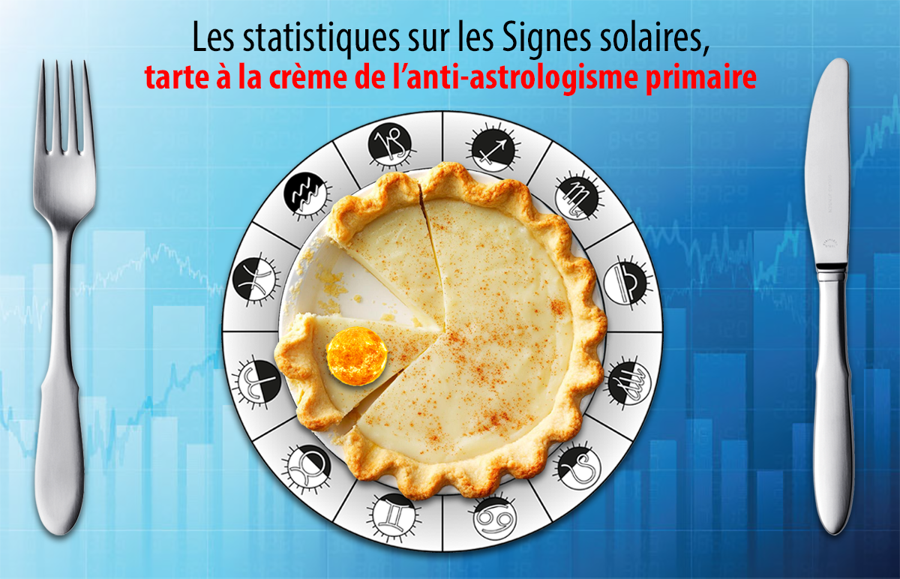
Serious, rigorous and original astro-statistical studies, whether pro or anti-astrology, are extremely rare. They do not focus exclusively on the Sun Signs, but seek to validate or invalidate all the astrological assertions concerning each Sign, each planet, each Aspect and each House taken in isolation. This isolation of the elements makes it possible to study the characteristics specific to each of them, but is done to the detriment of taking into account all the zodiac-planetary configurations, which directly influences the characteristics specific to the isolated element. It therefore only allows a very partial and fragmentary understanding of it.
The most serious and complete astro-statistical study, to which we have already alluded, was carried out by Michel and Françoise Gauquelin in the second half of the 20th century. Since it validated a number of astrological assertions, it was the target of implacable criticism from anti-astrologer statisticians who waged a real war of harassment against the Gauquelins as these results upset their certainties. We will come back to this in detail later.
We will not mention here the innumerable studies carried out on the Sun signs: it is useless and we have seen why. Among the precursors of astro-statistics, only the case of Paul Choisnard is the subject of a somewhat detailed mention, not only because he was the first, but also as an example not to be followed as pro-astrology statistician. If anti-astrologer statisticians had carried out by themselves (and not in reaction to statistical studies made by astrologers) serious and complete studies, therefore not bearing only on the zodiac, it would have been mentioned in the sections that follow.
We can briefly mention the astro-statistics about twins and on the student responses to psych tests correlated with their Birth Chart carried out by Suzel Fuzeau-Bræsch, honorary CNRS biology research director and astrologer. These studies suffer from a total lack of astrological and scientific rigor, especially in their delirious version of canine astro-statistics in the late 1990s. For this reason his work has been the subject of relentless criticism from a non-statistician astrologer but more rigorous than her and moreover of a seriously arguing anti-astrologer.
In the same vein and at the same time, Hervé Delboy, doctor with a degree in statistics and astrologer, applied the statistical tool to archaic and symbolist practices of predictive astrology and seemed satisfied with the results he obtained despite the totally irrational nature of his approach and his assumptions and the absence of significant results that he is obliged to observe. He exposed a similar study in a book prefaced by Suzel Fuzeau-Bræsch. This was the subject of a uncompromising criticism from serious astrology, but of no replication by anti-astrologists.
The examples of Choisnard, Fuzeau-Bræsch and Delboy demonstrate that one can practice astrology, have a solid scientific training (polytechnic, biology, medicine), and nevertheless err in the misguided and unrational use of a statistical tool. misunderstood and misunderstood. It is clear that only Michel and Françoise Gauquelin, who at the beginning of their research were rather skeptical vis-à-vis astrology and wanted to test it, seriously conducted (with very questionable and questionable hypotheses and choices) a rigorous astro-statistical work, the results of which objectively validate a significant part of astrological knowledge, and invalidate, rightly or wrongly, other parts. It is therefore their work that will be presented as exhaustively as possible.
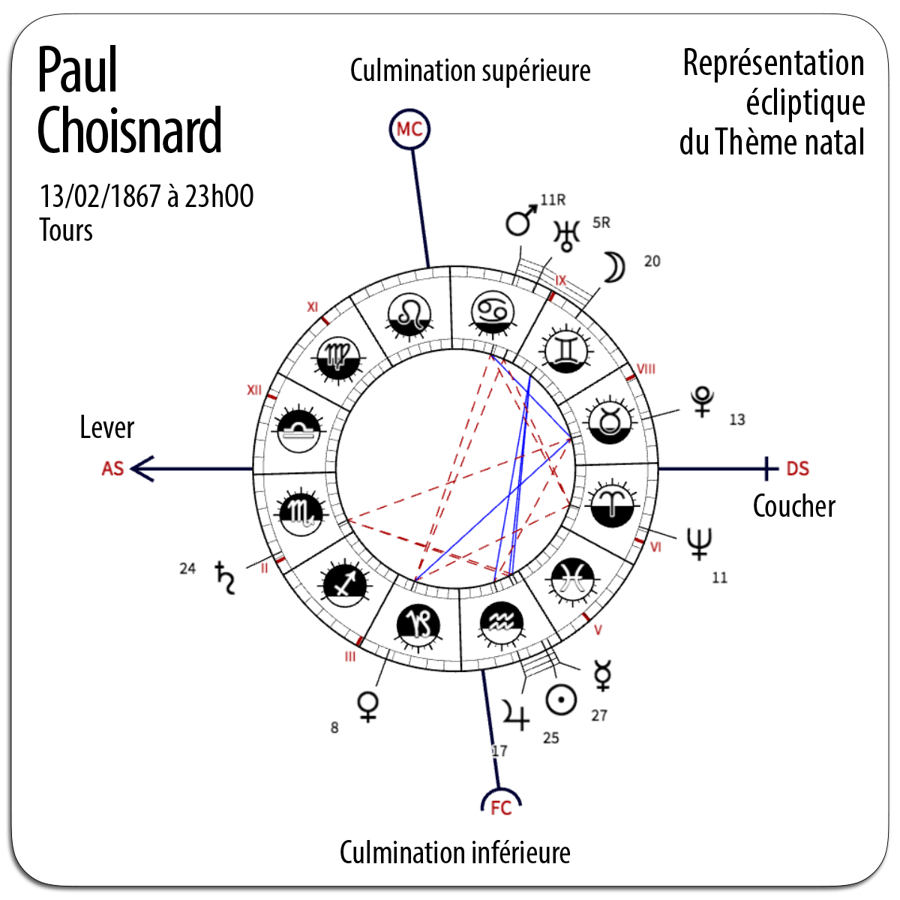
Paul Choisnard (born 13/02/1867 at 23:00 OT in Tours), polytechnician, artillery officer of the French army and astrologer, was the first to carry out, at the beginning of the 20th century, astro-statistical studies. In doing so, his ambition was to dust off classical astrology and reconcile it with modernity, of which he considered statistics to be the cornerstone very best. Unfortunately his work was only cosmetic: he did not question the doctrines of the Four Elements nor that of Planetary Masteries over the Signs. As for his stats (which he naively considered a “evidence” of the influence of the stars) relating to very small numbers, they were tainted at best with manifest and fundamental errors (it took into account neither the astronomical frequencies, nor the demographics, nor the real positions of the planets in the sphere locale), at worst deliberate cheating to get the results he wanted.
In his book The influence of the stars published in 1955, the researcher in astro-statistics Michel Gauquelin noted the lack of knowledge and rigor of Choisnard: “If the author has the idea of applying the calculation of probabilities to his results, he only knows the rudiments… He does not know that it is necessary to calculate the value of the deviations from the mean obtained in terms of probabilities and contents himself with evaluating the numbers found in percentages, neglecting the total number of elements involved… This leads him to consider as an expression of an astrological law a completely fortuitous result. Working on small numbers, it is normal that his result often reaches double the average.” Unable to confirm any results of the statistical work carried out by Choisnard when he made replications of them in the 1940s, he wondered: “How did Choisnard proceed to obtain results always in the sense in which he sought them? Chance could not have always stumbled upon what he wanted to prove. We are forced to conclude that he chose cases favorable to his thesis!”
Michel Gauquelin’s wife, Françoise, who has always been closely associated with his research, has an explanation: “I don’t think Choisnard stooped to that, despite his pleasure in proving his personal theories through statistics. By re-reading Choisnard’s explanations of the origin of his data, I found there a rather obvious reason for his successes which were impossible to confirm when one redid his experiments. Here it is: when Paul Choisnard had a new idea requiring a lot of data to test it, he exposed it to his friends and acquaintances, as well as to the listeners of his conferences, and asked them to communicate to him the cases necessary for the examination. statistics of his idea that they would hear about or come across in their reading. However, it is well known to psychologists that such a request following the presentation of a new idea does not provide an objective sample to test this idea. Friends and acquaintances will remember the researcher’s query much more easily if they come across a case that confirms the idea than a neutral or negative case. Choisnard thus received from his friends and acquaintances a majority of cases favorable to his hypothesis without anyone, neither he nor his friends, having had the intention of cheating in his favour. They all seemed to be perfectly objective. Moreover, very probably, Choisnard started off as a winner from the start, not having had his idea in a vacuum, but having already encountered during his readings cases which had oriented him towards this idea and which he did not had surely not failed to put aside to prove it. Initial selection that naive researchers call ‘beginner’s luck’ and which experienced statisticians recommend should be left out in a folder called ‘Source of a new hypothesis’ which should not be mixed with the ‘verification data’ of the assumption.”
The arguments put forward by Françoise Gauquelin to explain, if not defend, the errors (and probably the manipulations, which she seems to minimize) of Choisnard remain valid for all data searches, which are in a way the “raw material” of any statistical study. It is better for them to be as numerous as possible (Choisnard only worked on very small professional groups) and for their selection to be completely objective. At least from the point of view of purely frequentist statistics, because there are professions or particular aptitudes very “pointed” which only concern small populations, and which then require a Bayesian treatment.
Choisnard’s statistics, for all their flaws, nevertheless allowed him to make an important discovery. Indeed, his studies showed that the sectors of maximum planetary valuation were not located only in the Houses “angular” I-X-VII-IV as claimed by the “tradition” post-ptolemaic, but also in the Houses “cadent” XII-IX-VI-III, considered by the same “tradition” as debilitating for the Planets. Statistical studies by another astrologer, Léon Lasson (1901–1989), although also marred by errors and methodological shortcomings, will confirm this fact. But unlike Choisnard, Lasson will realize that it was not a question of a discovery, but of a rediscovery: very many pre-Ptolemaic astrologers indeed used a system of Houses which accounted for this phenomenon. We will come back to this in detail in a later section of this article.
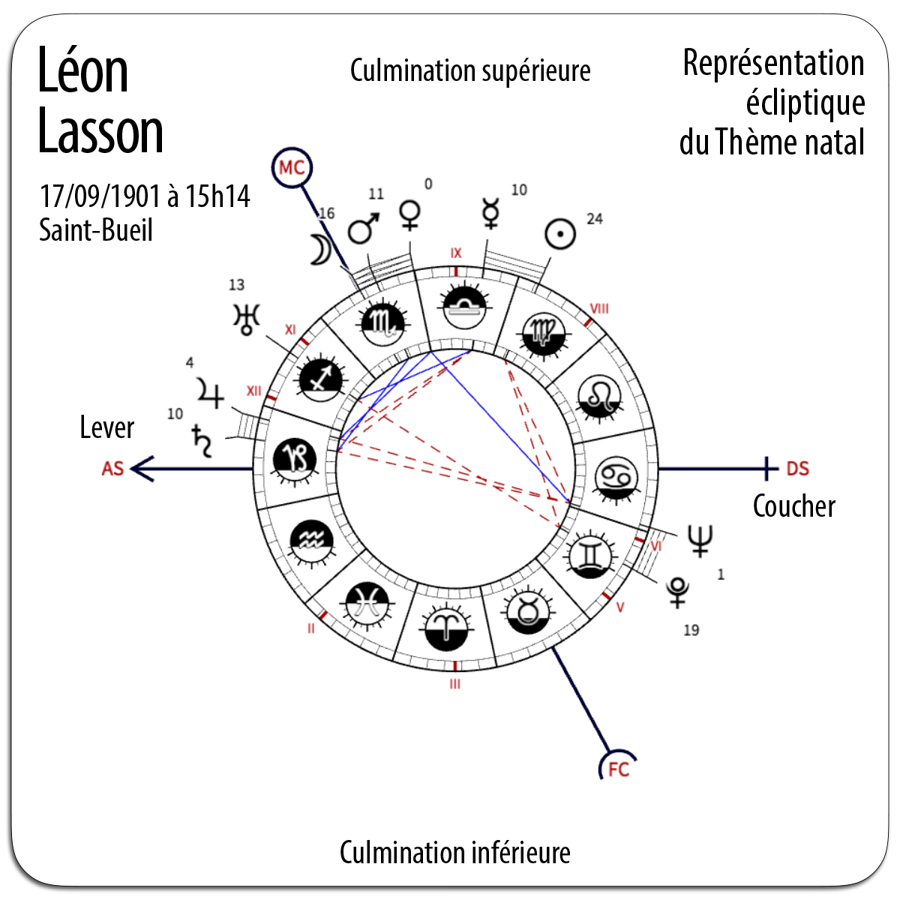
Michel Gauquelin (1928–1991) then with him his wife Françoise Schneider-Gauquelin (1929–2007) got down to a heavy task from the 1950s: that of carrying out real frequentist statistical studies on astrology. They made them with maximum scientific rigor, so that they could not be accused of unconscious data manipulation, cheating or “confirmation bias” (cognitive bias encouraging those who are affected to favor data confirming their preconceived ideas and/or to neglect those which do not confirm them).
Michel Gauquelin’s interest in astrology was very early if we are to believe what he wrote in the prology of his book The Dossier of Cosmic Influences published in 1973: “As far back as I can go back to my childhood, not my earliest memories but my earliest rational experiences, I always knew I would be interested in astrology. For what? I don’t know. Initially, chance played a role. No one in my family was an astrologer. They viewed horoscopes as a board game, nothing more. At the age of seven, I asked my classmates their date of birth in order to triumphantly tell them the sign of the zodiac under which they were born […] At the age of ten, I begged my father to tell me show how to calculate the ascendant of an astrological chart. […] By the age of seventeen, I had devoured more than a hundred books on astrology. […] The assurance of the astrologers I met were not commensurate with the complex nature of the problem. It is true that for them there was no problem, and I found it increasingly difficult to tolerate their palaver. Was their proof only in their imagination? I decided to look for evidence and, if possible, to collect it.” But it is not indifferent to know that the father of Michel Gauquelin, a dentist by profession, also practiced astrology as a hobby.
He therefore began to doubt and, around his 20s, began to systematically check the statistics produced by astrologers like Paul Choisnard, and later by Léon Lasson, Herbert von Klöckler or Karl-Ernst Krafft. This is how Michel Gauquelin embarked, first solo and then with his wife Françoise from 1952, on his research before studying psychology and statistics at university.
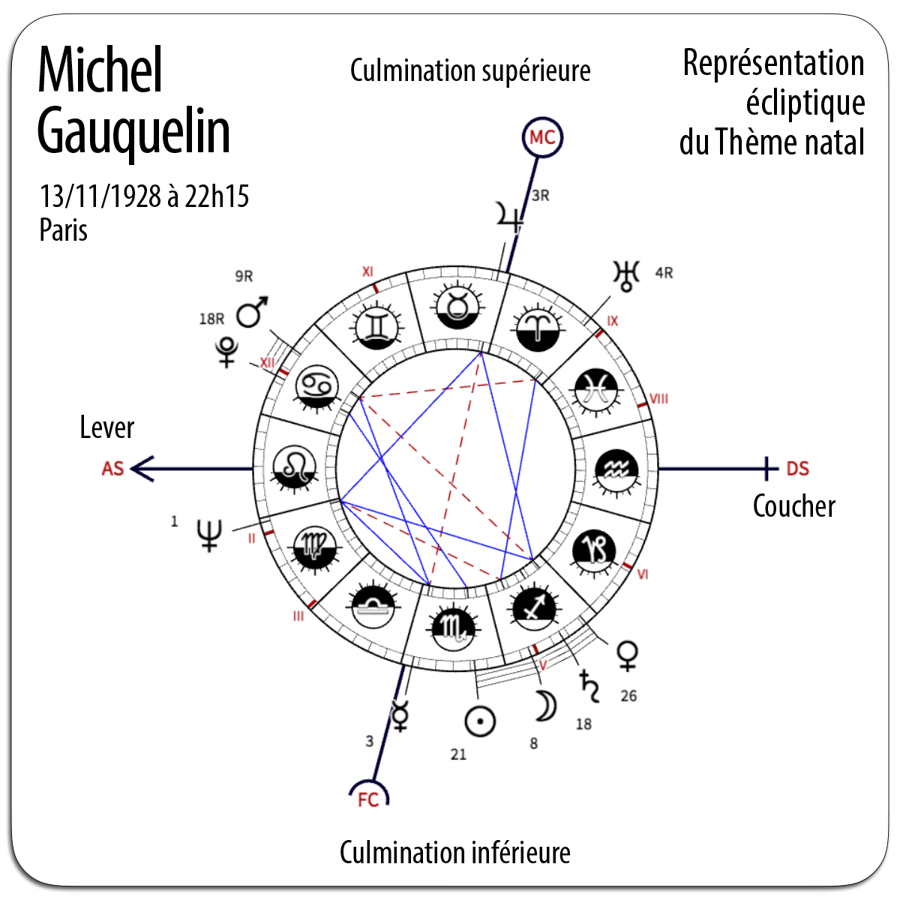
His wife Françoise held a degree in Educational Psychology and Psychotechnics & Psychopathology, and later, in 1960, a degree in statistics obtained thanks to a thesis on “Birth time”: we see that she had obtained this university qualification for a very specific reason. This information is given so that it is known that Françoise was closely associated with Michel’s work, even if it was he who derived all the glory and recognition from it.
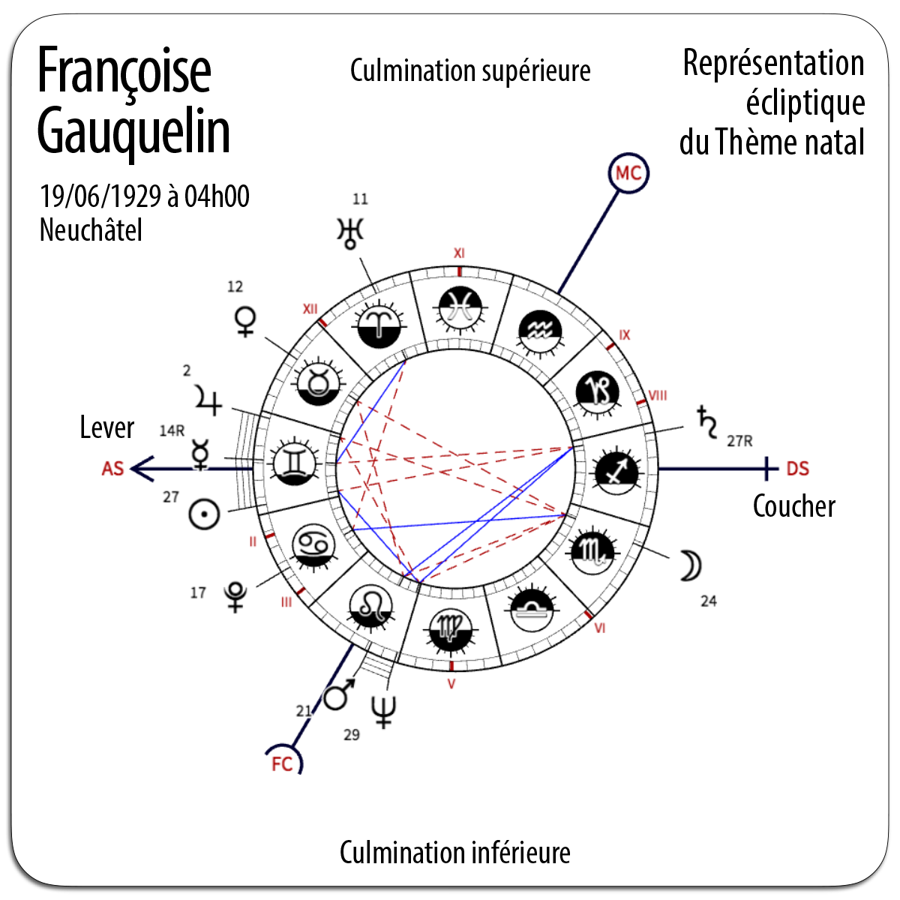
After replicating the work of Choisnard and his successors and noting that none of them was credible as errors, confirmation biases and data manipulations were systematic, Michel Gauquelin resolved to work on entirely news, by gradually accumulating tens of thousands of data collected from various biographical dictionaries and professional directories to obtain dates and places of birth, then by requesting extracts from acts from the Civil Registry services in order to know the official birth time of each individual whose horoscope he had to calculate. A colossal and time-consuming task at a time when computers did not exist. Because initially the profession that was selected as the basic criterion, the challenge being to demonstrate whether or not there was a statistically significant correspondence between the profession exercised by individuals and the zodiac-planetary distributions in their horoscopes.
The results of this research, which became famous as “Mars effect” given to him by anti-astrologers, validated this correlation: statistics showed that Mars (and also Saturn) was more frequently in certain areas of the local sphere (rising, setting, upper or lower culmination) in the populations of academicians of medicine (because it was through the study of this group, and not that of sports champions, that this research began) than in control groups made up of doctors lambda. Michel Gauquelin (at that time, Françoise was not working with him) continued his research, this time concerning other populations: sportsmen, soldiers, actors, painters, politicians, priests and even notorious criminals. These statistics in fact confirmed an essential datum of the discoveries of Choisnard and Lasson concerning the strong planetary valuations in the Houses “cadent” XII-IX-VI-III, considered by the “tradition” as debilitating for the Planets that were there.
This first study, which related only to the supposed influence of the planets on groups exercising these various professions, was published in 1955 in a book entitled The influence of the stars. The significant results obtained concerned:
▶ Jupiter: higher than average frequency of angularities among actors, deputies and generals;
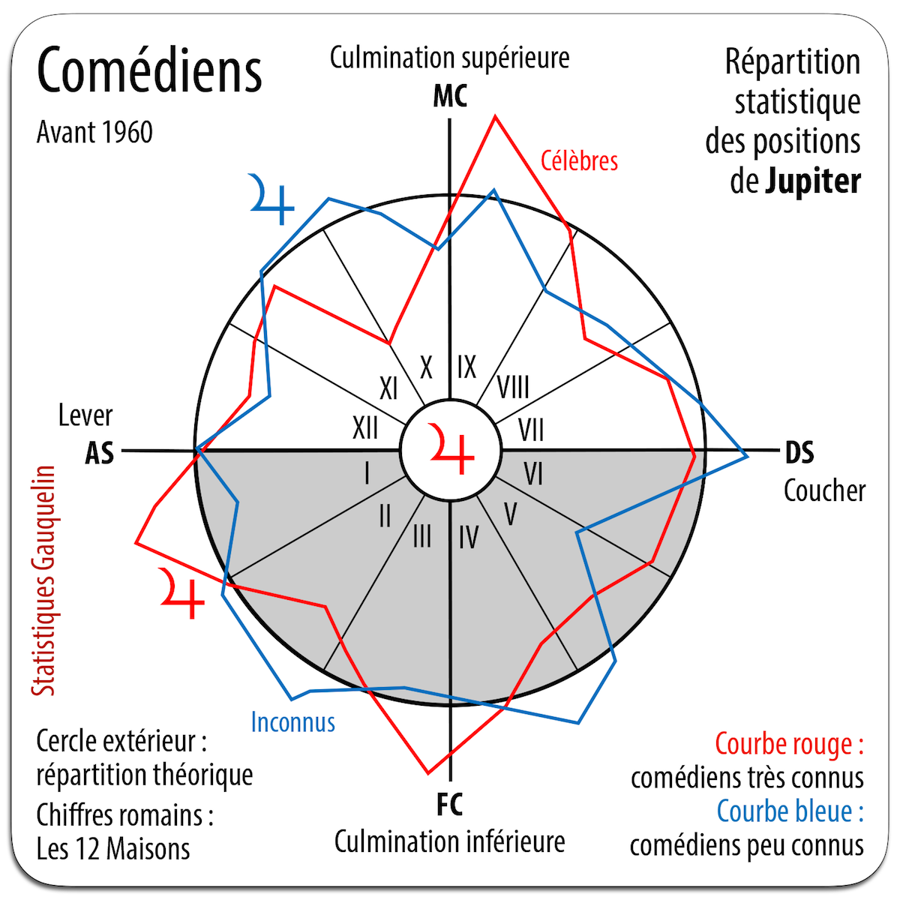
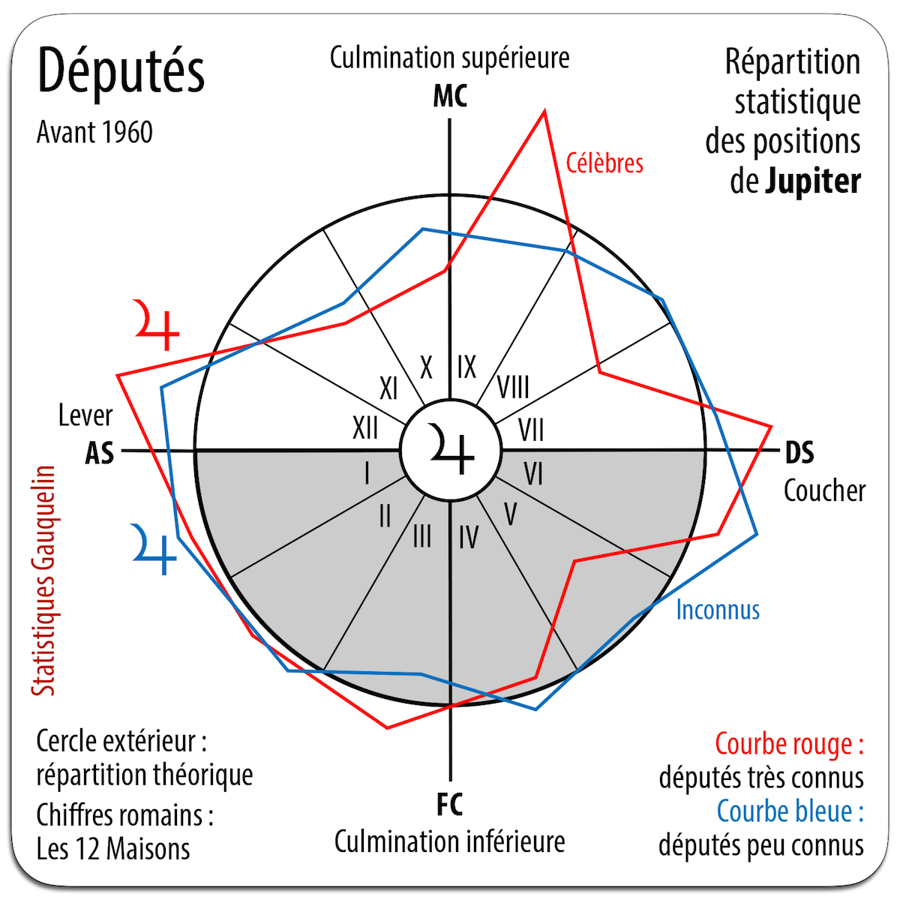
▶ Mars: higher than average frequency of angularities in the horoscopes of sportsmen and generals;
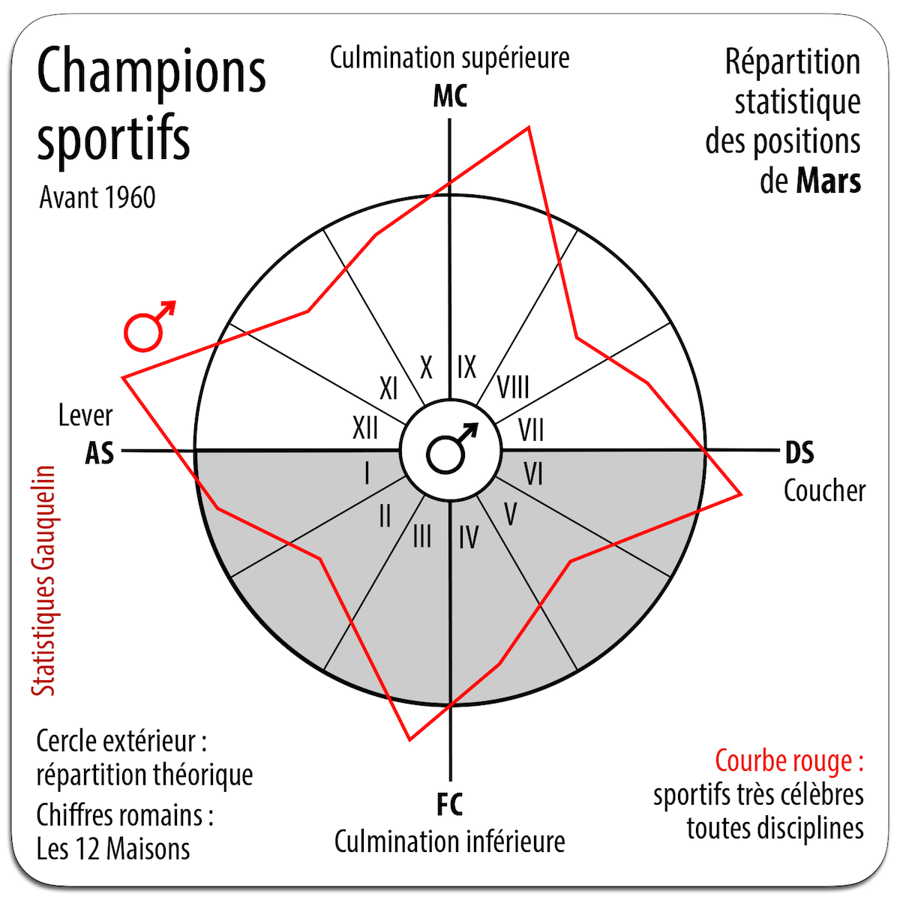
▶ Mars: comparison of the frequency of above-average angularities in the horoscopes of sportsmen at “morale of steel” and to “fragile morale” (this study was conducted after this initial research);

▶ Saturn: higher than average frequency of angularities among scholars, doctors and priests;
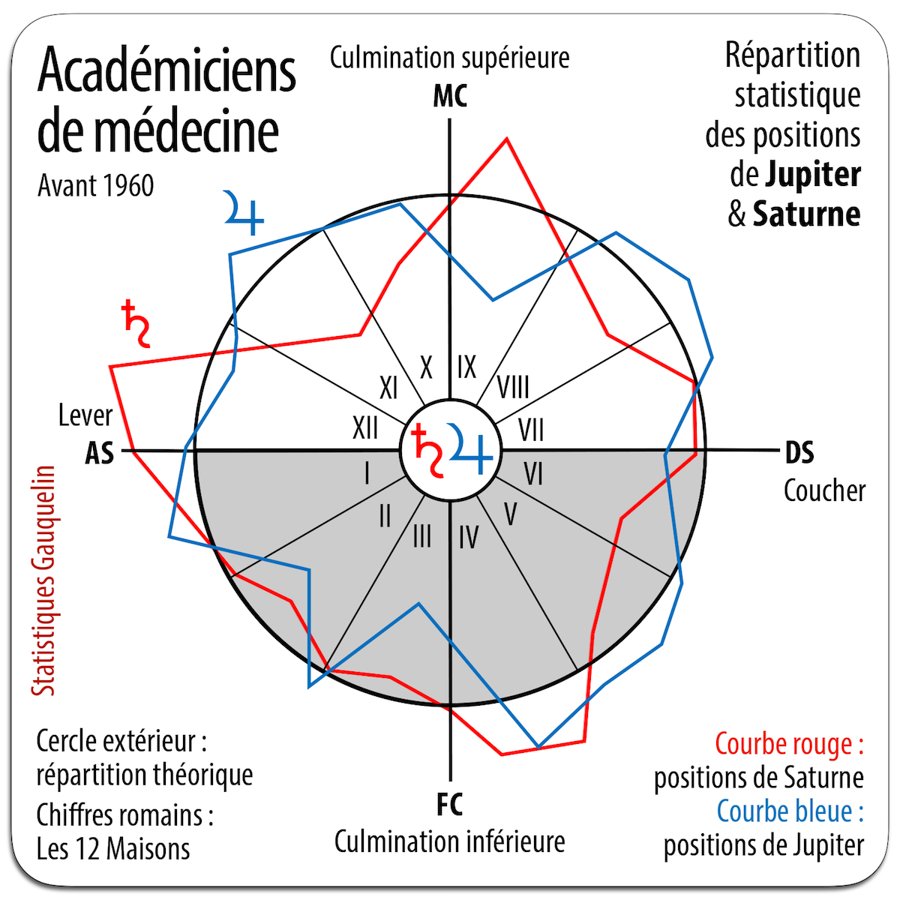
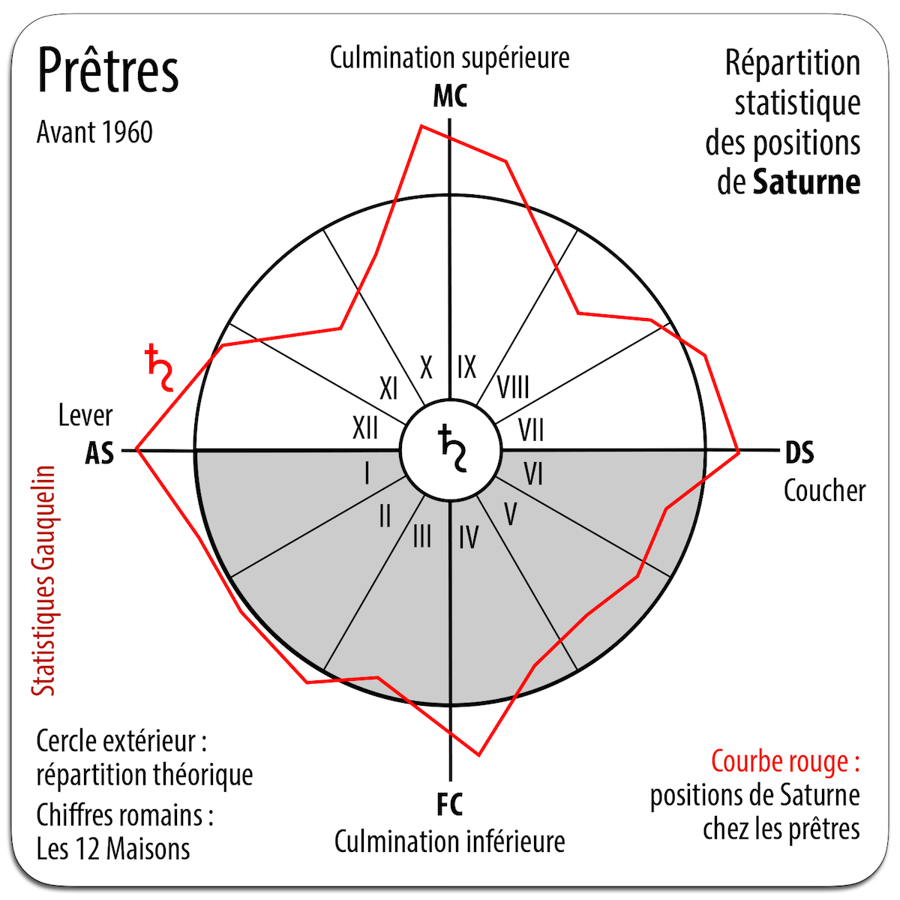
▶ Mars-Jupiter: cumulative frequency of angularities higher than the average in generals;
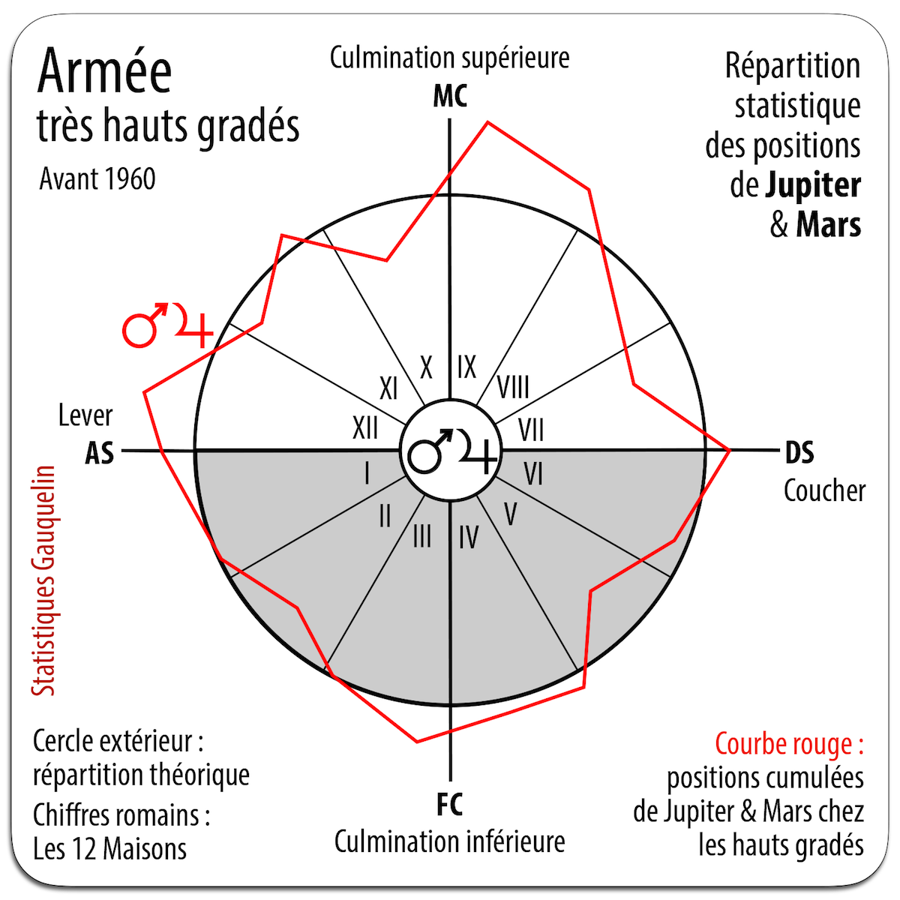
▶ Mars-Saturn: cumulative frequency of angularities higher than the average among scientists & doctors.
The same study also studied the weakness of the angularities of these three planets:
▶ Saturn: lower than average frequency of angularity among actors and deputies;
▶ Mars-Saturn: cumulative frequency of angularities lower than the average among painters;
▶ Jupiter: frequency of angularities lower than the average among scientists & doctors.
Note that during these first statistics and during the years during which they had to do all their astronomical calculations by hand (computers did not exist at that time), the Gauquelin calculations were only based on the ecliptic longitudes of the planets and the House tables of Placidus. The ecliptic latitudes were therefore initially not taken into account, whereas they can very significantly vary the planetary positions in the local sphere. On the suggestion of Françoise Gauquelin who had the idea of using some almanacs giving the rising and setting times of the planets, the ecliptic latitudes, only for planets close to the horizon, ended up being incorporated into their calculations by this clever means. However, they only used it on small scales, in order to carry out tests to see if this parameter did not significantly affect their results, and they found that it did not. They didn’t start to apply ecliptic latitudes on a large scale only when they finally had, during the 1980s, powerful computers allowing them to quickly perform these tedious calculations.
A subsequent independent study by astrologer Jean-Christophe Vitu in 1997-1998, relating to 10,000 randomized Charts, shows that this failure to take into account the ecliptic latitudes of Mars, Jupiter and Saturn only introduced an average margin of error of 3% for these three planets. The first results of the Gauquelins were therefore not significantly altered or modified.
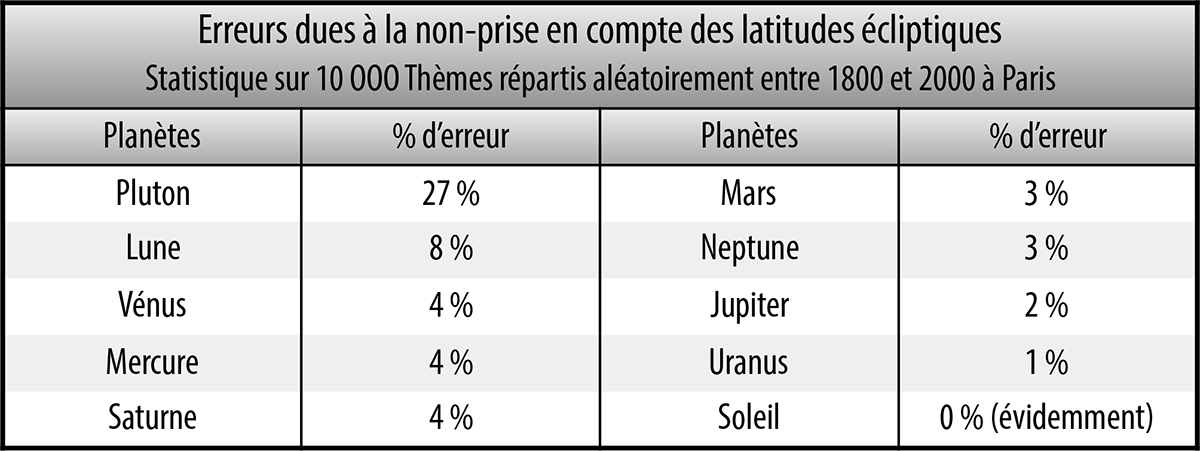
From all of these distributions relating exclusively to births prior to 1950 (precision is important regarding the accuracy of times prior to this reference year), Michel Gauquelin inferred a graph representing the “key sectors” of planetary effects:
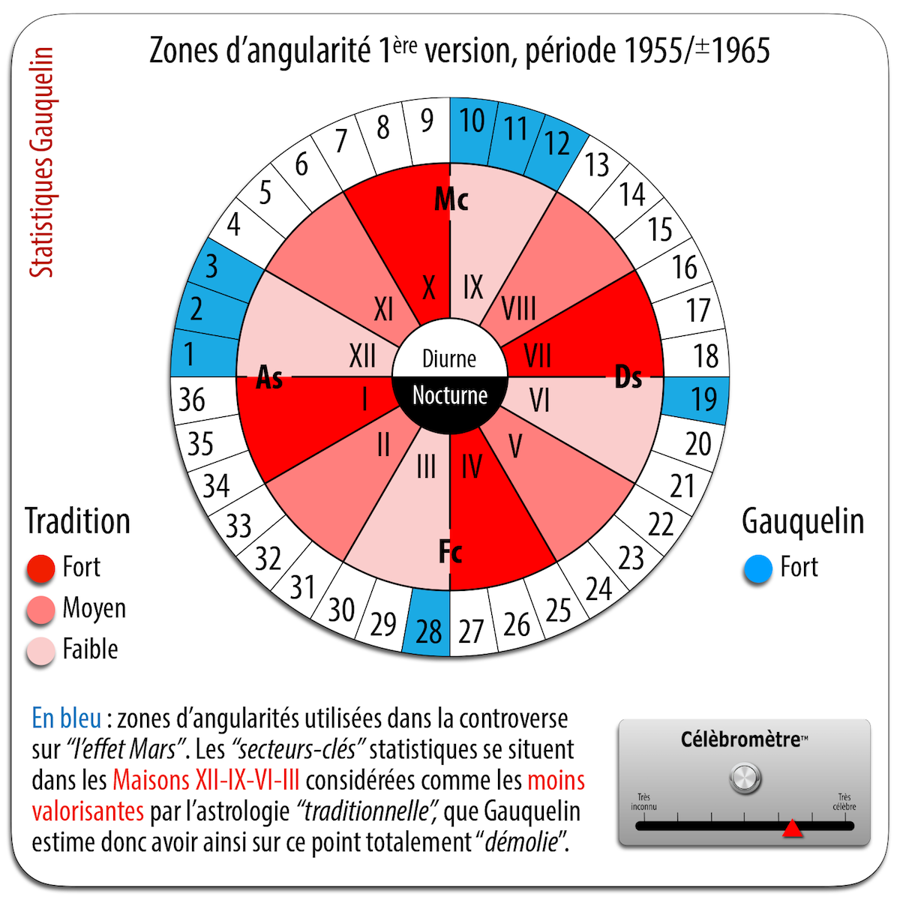
Between 1965 and around 1972, his research led him to significantly modify the scope of “key sectors”. This new graph was as follows:
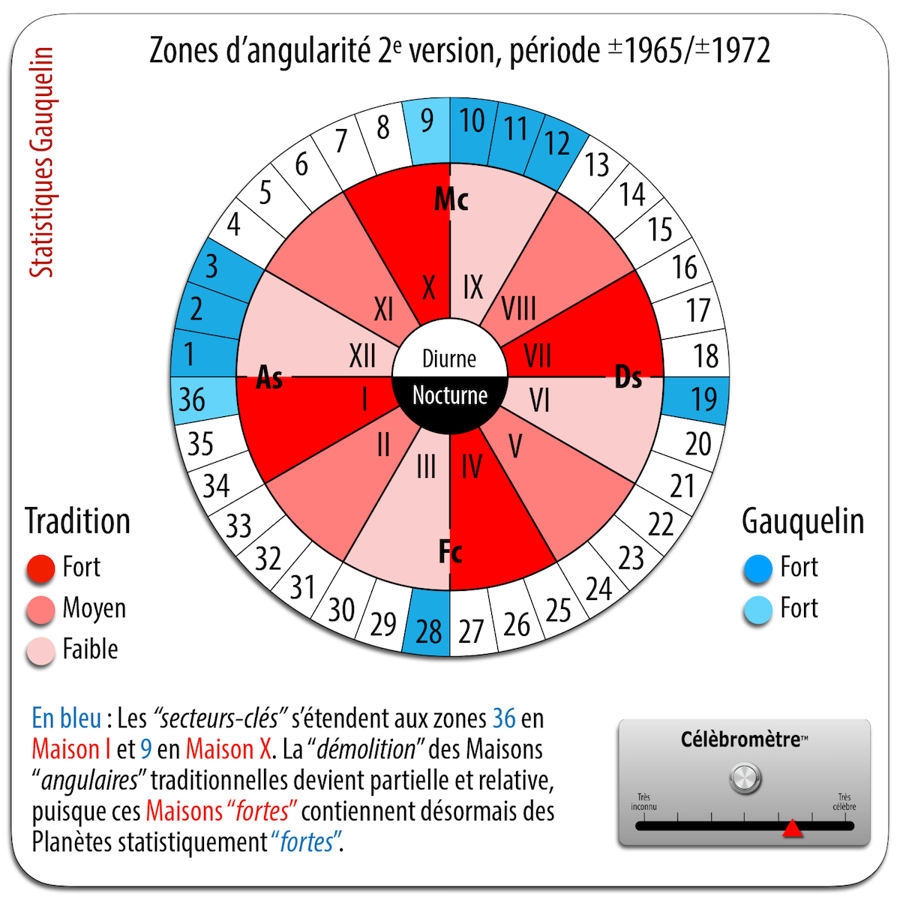
A later study found significant angularity frequencies of the Moon in writers. Finally, these various studies noted the absence of influence from the Sun, Mercury, Venus, Uranus, Neptune and Pluto.
Another study, published in 1966, focused on the hypothesis of a “planetary heredity”, according to which the angular planets at the birth of the children should frequently be identical and be in the same zones as those of the parents. This research, which covered tens of thousands of data, only validated this hypothesis by low frequencies but at the same time revealed the influence of Venus, which was absent from the statistics relating to professions. A second study on the same subject was carried out in 1977. It confirmed the low amplitude of the results obtained. Things took a turn for the worse in 1984, during a 3rd replication, which Françoise Gauquelin undertook alone, which this time concerned a population almost doubled compared to those which had been used for the first two experiments, i.e. 50,942 births allowing 33,120 parent-child comparisons. The results very clearly invalidated the hypothesis of planetary heredity… whereas this much larger population should have confirmed it with brilliance. Michel Gauquelin found this failure “confusing” and hoped that a later replication would give explanations, so that we could “one day know the truth about planetary heredity”.
Intrigued by this phenomenon which they did not yet know that its third and in principle main replication would end in a huge failure, the Gauquelins then undertook new statistical research based on the criterion of “character traits”, in order to evaluate if the planets whose influence did not appear in the study on the professions but could do so in the case of “planetary heredity” had one according to this new criterion “psychological”. They then developed a method based on reading biographies of celebrities and on a systematic review of “character traits” assigned to them. The statistical treatment of these data highlighted the additional influence of Venus — already highlighted by the statistics on planetary heredity — which the Gauquelins, let us remember again, did not know would later be invalidated — and of the Moon, but still not those of the other planets. It is therefore through a probable artefact in the experiment on planetary heredity that the Gauquelins highlighted the influence of Venus… which would later be confirmed, independently of any reference to planetary heredity.
This new research had the unexpected result of prompting a new study of the frequency of Moon angularities among writers, which turned out to be significant. The criterion of “character traits” however did not lead to any significant results for the Sun, Mercury, Uranus, Neptune and Pluto. Later studies by statisticians close to Françoise Gauquelin ended up considering the entry of Mercury into the group of planets deemed probably influential.
All studies concerning the Signs of the zodiac, the planetary Aspects (with the exception of conjunctions, squares and oppositions in a final study by Françoise Gauquelin) led to negative results.
Here is the assessment that Michel Gauquelin drew from his astro-statistics in his book The dossier of cosmic influences: “We do not find grains of astrological gold in the signs of the Zodiac […] In this investigation, as in all those we have carried out on the Aspects, everything happens randomly as if their influence did not exist [a study conducted by Françoise Gauquelin contradicts this assertion and later validated, after Michel’s death, the influence of dissonant Aspects… but emphasizing their ‘beneficial’ characteristics, contrary to traditional assertions] […] By appending the diurnal movement of the planets to the domain of possible astral influences and by insisting on the role of the horizon-meridian axis, astrology has, once again, had the intuition of something. But in its traditional form, the astrological Roulette Houses, no more than the two previous ones, does not allow horoscopic martingale.” Needless to say that the Gauquelin couple did not want to be confused with astrologers at any price… at least at the beginning of their research.
The English site Planetos gives a wealth of near-exhaustive information on Gauquelin statistics and on controversies and cheating about the “Mars effect” who followed them.
▶ The specific issues of astrological statistics
▶ Tests et prétextes : comment démonter l’astrologie ?
▶ Astrologie canine, astrologie cynique ? À propos d’une expérience statistique sur des chiens
▶ Carlson’s “experiment”: an example of anti-astrologist quackery
▶ The Petiot affair and the “Barnum effect” or the anti-astrologer circus
▶ Le problème des jumeaux en astrologie
▶ Uranus astronomique
▶ Sun-Uranus aspect
▶ Mars-Saturn aspect
▶ Astrologie et astrologies : écoles, courants et chapelles
▶ Results of conditionalist astrology
▶ Results of traditional astrology
▶ Results of statistical astrology
▶ The world according to Claudius Ptolemy, astronomer-astrologer and lighthouse of Alexandria
▶ Ptolemy and the error of the senestrogyrate Houses
▶ Introduction to the comparative results of astrologies
▶ Anar-show en hommage à Paul Feyerabend
▶ Ike Uncyfar and Astro-statistics on video

Les significations planétaires
par
620 pages. Illustrations en couleur.
La décision de ne traiter dans ce livre que des significations planétaires ne repose pas sur une sous-estimation du rôle des Signes du zodiaque et des Maisons. Le traditionnel trio Planètes-Zodiaque-Maisons est en effet l’expression d’une structure qui classe ces trois plans selon leur ordre de préséance et dans ce triptyque hiérarchisé, les Planètes occupent le premier rang.
La première partie de ce livre rassemble donc, sous une forme abondamment illustrée de schémas pédagogiques et tableaux explicatifs, une édition originale revue, augmentée et actualisée des textes consacrés aux significations planétaires telles qu’elles ont été définies par l’astrologie conditionaliste et une présentation détaillée des méthodes de hiérarchisation planétaire et d’interprétation accompagnées de nombreux exemples concrets illustrés par des Thèmes de célébrités.
La deuxième partie est consacrée, d’une part à une présentation critique des fondements traditionnels des significations planétaires, d’autre part à une présentation des rapports entre signaux et symboles, astrologie et psychologie. Enfin, la troisième partie présente brièvement les racines astrométriques des significations planétaires… et propose une voie de sortie de l’astrologie pour accéder à une plus vaste dimension noologique et spirituelle qui la prolonge et la contient.
Téléchargez-le dès maintenant dans notre boutique

Pluton planète naine : une erreur géante
par
117 pages. Illustrations en couleur.
Pluton ne fait plus partie des planètes majeures de notre système solaire : telle est la décision prise par une infime minorité d’astronomes lors de l’Assemblée Générale de l’Union Astronomique Internationale qui s’est tenue à Prague en août 2006. Elle est reléguée au rang de “planète naine”, au même titre que les nombreux astres découverts au-delà de son orbite.
Ce livre récapitule et analyse en détail le pourquoi et le comment de cette incroyable et irrationnelle décision contestée par de très nombreux astronomes de premier plan. Quelles sont les effets de cette “nanification” de Pluton sur son statut astrologique ? Faut-il remettre en question son influence et ses significations astro-psychologiques qui semblaient avérées depuis sa découverte en 1930 ? Les “plutoniens” ont-ils cessé d’exister depuis cette décision charlatanesque ? Ce livre pose également le problème des astres transplutoniens nouvellement découverts. Quel statut astrologique et quelles influences et significations précises leur accorder ?
Enfin, cet ouvrage propose une vision unitaire du système solaire qui démontre, chiffes et arguments rationnels à l’appui, que Pluton en est toujours un élément essentiel, ce qui est loin d’être le cas pour les autres astres au-delà de son orbite. Après avoir lu ce livre, vous saurez quoi répondre à ceux qui pensent avoir trouvé, avec l’exclusion de Pluton du cortège planétaire traditionnel, un nouvel argument contre l’astrologie !
Téléchargez-le dès maintenant dans notre boutique